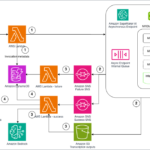The S&P 500’s health care sector (NYSEARCA:XLV), holding a weightage of 12.12% in the S&P 500 index, saw a fall of 0.49% in Q2 and is the fifth lowest scored sector by the SA Quant rating system.
With earnings kicking off next week, we look at the sector’s performance and where its constituents stand on the rating system.
XLV index rose about 11.5% in the last 12 months, trailing behind the broader S&P 500 which gained about 26.48%. The S&P 500 health care sector is the fifth-lowest rated sector as per Seeking Alpha’s Quant ratings system and has a score of 3.01 out of 5 with a Hold rating.
The index fares well on dividends and liquidity metrics with a score of A+, but it scores a B- on momentum and C in risk.
Quant ratings of companies
Out of the sector’s 64 constituents, 1 company has a Strong Buy rating, 1 company has a Buy rating, 61 have a Hold rating and 1 has a Sell rating.
DaVita (DVA) has the highest score of 4.55 with a Strong Buy rating as the company raised its FY2024 guidance and posted better than expected Q1 results. Analysts believe that this company is poised for top-line growth in the coming quarters.
Illumina (ILMN) comes in second with a score of 3.59 with a Buy rating. The company has worked out almost two years of headwinds from FTC and EU on GRAIL divestiture, with analysts believing that this spin-off could be profitable to the company in the near term with upside in core margin.
Eli Lilly (LLY) came in third with 3.49 score and a Hold rating. The company has been riding the rally of its weight loss drugs, upgrading its full year 2024 guidance, while analysts are sceptical if there will be a near-term slow period for the stock.
Walgreens Boots Alliance (WBA) lies in the bottom of the quant ratings system in the health care sector with a score of 2.17 with a Sell rating. SA analyst Yiannis Zourmpanos says that challenging environment with weak consumer spending and inflation pressures are impacting Walgreens’ performance.
Analyst comments
According to SA analyst John Bowman, “The healthcare sector is one that exhibits “inelastic demand” and has the unique advantage of being essential to peoples’ lives.
Healthcare’s valuation has been stunted by risks such as the “patent cliff” in the next few years, but its valuation is now very attractive.”
On the Life Sciences subsector, Citi Research says, “In Life Sciences, investor sentiment has shifted more negative in recent weeks and the bar has been lowered with ability to meet expectations (vs. delivering above) and demonstrate some level of visibility (including order funnel velocity for Tools) likely to be rewarded. We are more cautious on the bioprocessing names given recent industry datapoints.”
While with MedTech, Citi notes, “Going into 2Q24E, the question we’re all asking is whether management’s lukewarm outlook in 1Q24 was due to excess conservatism or a reflection of some larger, secular issues that are starting to emerge. Regardless of the actual performance within the quarter, we expect the bulk of stock movements post 2Q24 to be based on management’s messaging for 2H24E.”










